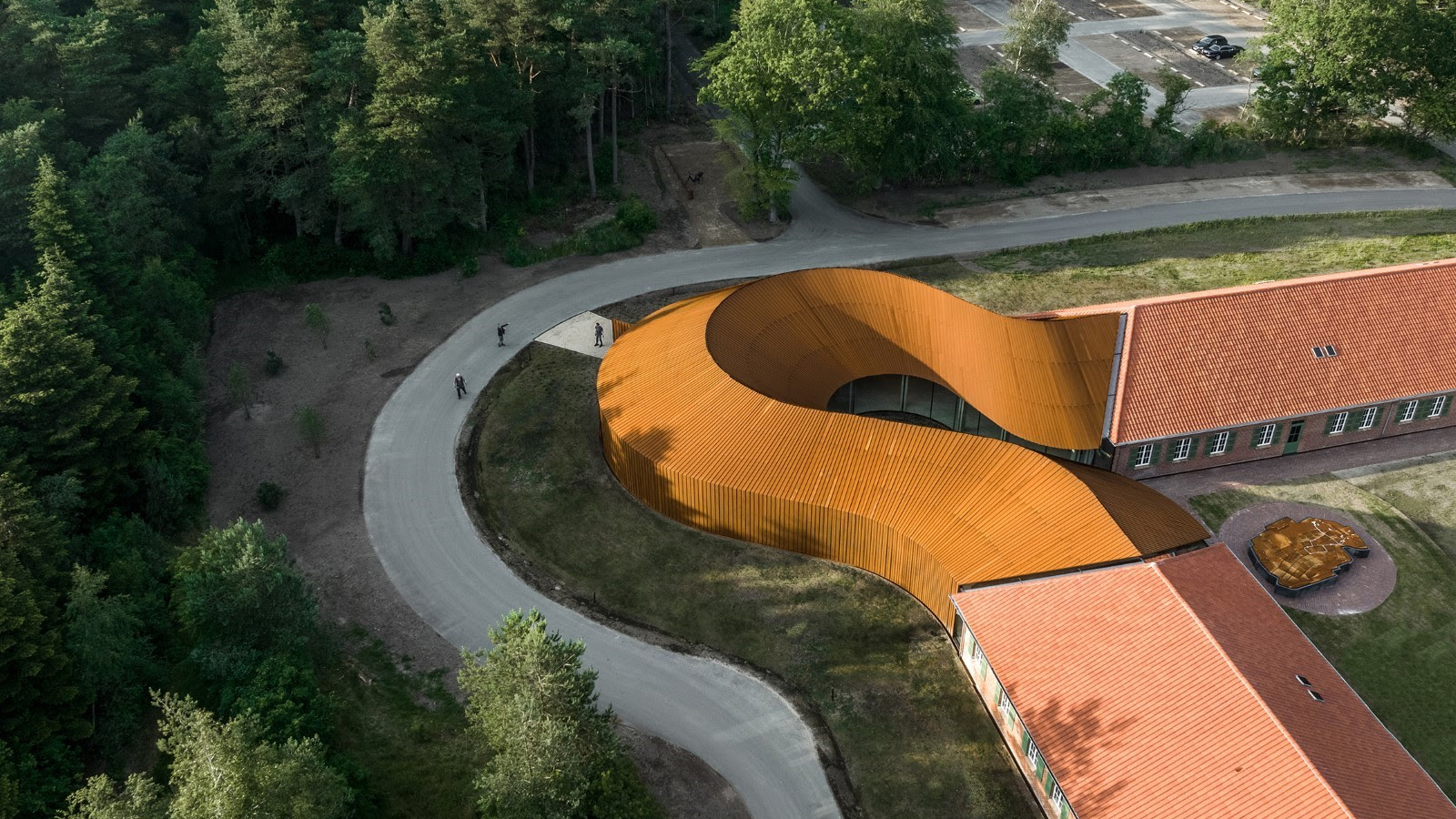
Denmark’s Queen Margrethe II has inaugurated the new Refugee Museum of Denmark, known as Flugt, in Oksbøl, at the site of the biggest refugee camp in the country during World War II.
At its peak, the camp was effectively Denmark’s fifth-largest city.
Few structures remain, but the design by architect Bjarke Ingels Group (BIG) and exhibition designers Tinker Imagineers joins the camp’s two surviving hospital buildings with a curving structure to create the 1,600 sq m museum for client Vardemuseerne, a local institution dedicated to the region’s history and archaeology.
BIG said it “captures the universal challenges, emotions, spirit and stories shared by displaced humans”.
“The Refugee Museum of Denmark explores an important part of our history and a theme that is more relevant than ever, with millions of refugees currently displaced from their homes,” said Bjarke Ingels, BIG’s founding partner.
BIG project leader Frederik Lyng said the museum was “a great example of how adaptive reuse can result in sustainable, functional buildings that preserve our shared history while standing out architecturally”.











